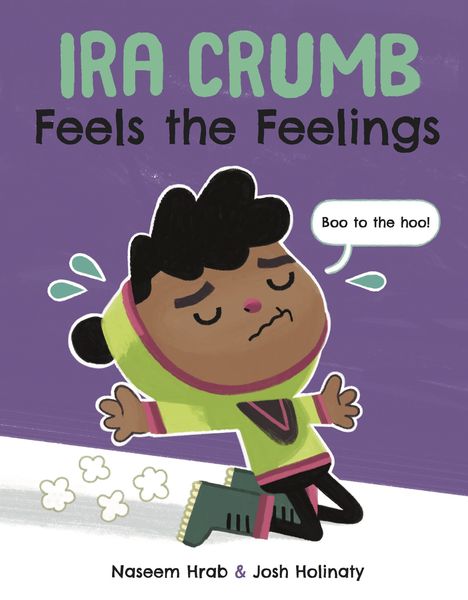Five Tips for Writing About Tough Topics for Children and Teens
By Naseem Hrab
The best comedy often comes from life’s darker moments. Read up on any comedian and you’ll likely learn about their tumultuous beginnings, middles and ends. (Especially, on Twitter. Literally. At this very moment.) Estee Adoram, the Comedy Cellar’s legendary booker, said that Ray Romano is the only emotionally healthy comic. Yikes. It’s funny because it’s true and it’s sad because it’s true.
I see my sad, quiet writing and funny, loud writing for children as two sides of the same coin. For every funny book, I've written one sad book. I can tell that my brain wants to toss and turn between these two realms. I sometimes wonder if it’s the sad clown paradox at work. Where there’s light, there’s also darkness.
Laughing and making people laugh can help relieve stress, defuse conflict and, most importantly, make us feel happy. But I also think that sometimes it’s just as important to sit in sadness and I’ve found that writing the pain away (or at least trying) can really help. Especially, when you write about painful moments from your childhood. There’s something about the distilling of your experiences that can be very healing and helpful. Also, if you can make your sadder experiences palatable for a younger audience you might be able to make them more palatable for yourself.
That said, writing about difficult topics for kids can feel near impossible to start. We often err by softening the blow too much because we want to protect young readers from the pain we felt. However, by doing that we can easily erase the very topic we are trying to address. Also, some gatekeepers try to shelter kids from reading about difficult topics with a dismissive, “Kids shouldn’t have to read about abuse, bulling, death, divorce, poverty, racism, war, etc.” Yet children live these realities every day. I think most of us reading this column agree that books can act as both mirrors reflecting readers’ own experiences and windows that can open their eyes to the experiences of others and activate their empathy. And to paraphrase one of my favourite comedians Mike Birbiglia, “If I can live it, you can hear about it.”
To that end, here are my top five tips on writing about tough topics for kids.
Your CanLit News
Subscribe to Open Book’s newsletter to get local book events, literary content, writing tips, and more in your inbox
- I have these two big questions from comedian and writer Larry Charles posted on my desk, “Does this story really need to be told? Am I the one to tell it?” Don’t pluck stories from other people’s lives. Tell your own stories. Be brave.
- Be inquisitive about yourself and your experiences. Spend time thinking and listening before you start writing. Are you truly ready to share your story? Maybe it’s ready because of years of talking about it with trusted friends, or a therapist. Maybe it’s ready because of years of journaling and thinking. Approach your experiences with compassion and curiosity. After all, that’s how you want your readers to approach your story and the world.
- Avoid pandering, parenting and preaching. That is, don’t forget what it feels like to be a child. You’re not telling your story, you’re sharing your story. Try to find the emotional and narrative threads that are accessible to younger readers—whether it’s a fiction or nonfiction approach. And seeing your experience through the eyes of a young character can help you approach your experience form sorts of different angles. Above all, remember that you’re trying to help someone understand the emotions you experienced.
- Don’t try to write stories for everyone. Every time I hear someone say that a book is for “all children” I cringe a little bit. I’ve said this before and I’ll say it again—the more you write for “everyone” the more you write for no one. Feel the freedom to be specific. You may feel like you’re shrinking your readership, but the audience (no matter how small) who understands your work will really appreciate your experience.
- Know that vulnerability begets more vulnerability. Maybe your story will just end up living in your drawer. Maybe it will get published and go out in the world. If it goes out in the world, be prepared for others wanting to share their experiences with you. And how beautiful is that … collective healing.
The views expressed by Open Book columnists are those held by the authors and do not necessarily reflect the views of Open Book.
Naseem Hrab is the author of the picture books Ira Crumb Makes a Pretty Good Friend and Ira Crumb Feels the Feelings, illustrated by Josh Holinaty. Her comedy writing has appeared on McSweeney's Internet Tendency and The Rumpus. Sometimes Naseem likes to get up on a stage and tell true stories. She loves improv and coffee ice cream.
She worked as a librarian for a time and currently works in children's publishing.


